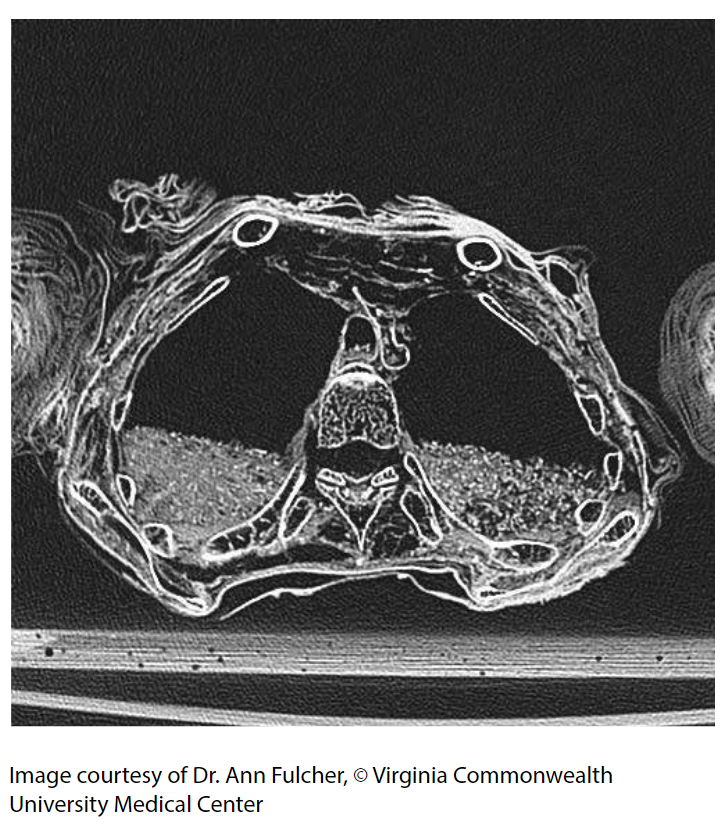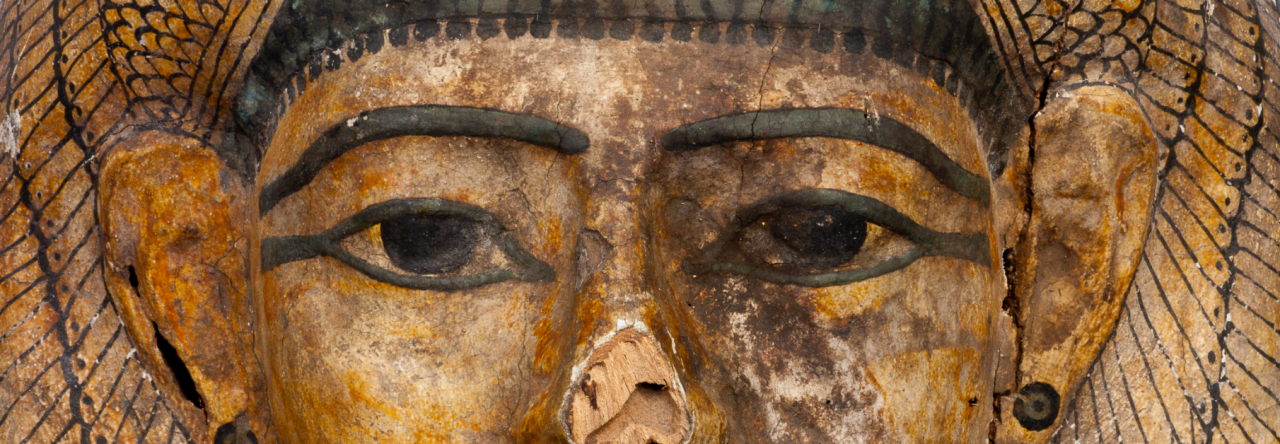The term CT scan, or CAT scan, stands for x-ray computed tomography, which means cross-section. CT scans use low-dose beams of radiation that cross the body in a single plane at several different angles. The CT scan distinguishes the different tissues of the body by density, so images reveal not just bones but also skin, muscle, and organs.
In Mummies, the dehydration of the tissues in most cases makes diagnosis and interpretation of the CT scans more difficult. However, as more mummies are undergoing CT scanning, it has become easier for scientists to analyze mummy CTs for medical conditions such as heart disease or tumors. These images also reveal artifacts such as cloth, pottery, wood, and papyrus that might be included in a coffin or wrappings but are invisible to the naked eye or standard x-rays.

This CT image shows an axial (cross-sectional) image of Ti Ameny Net’s torso, around her chest area showing her lungs and vertebrae. The image reveals the packing material inside the body cavity and the many layers of linen wrapped around the arms.
Up next: X-rays
